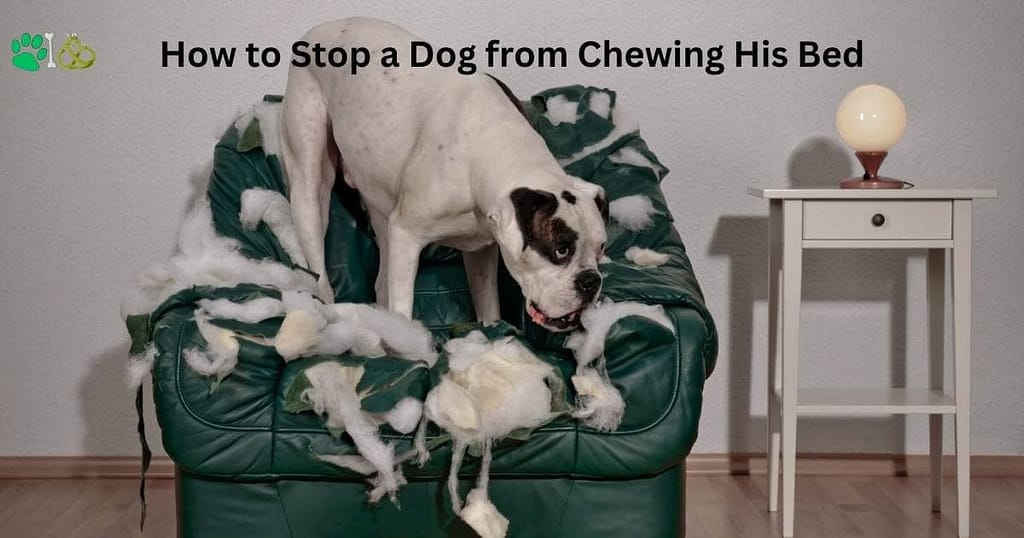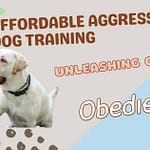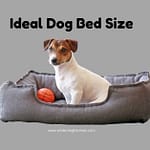How to stop a dog from chewing his bed is a question echoing through frustrated pet households worldwide in 2025. That sinking feeling when you walk into the room and find fluffy white stuffing everywhere, your pup looking guiltily (or triumphantly!) beside the tattered remains of their once-comfy bed? Sound familiar? You are not alone. This harmful chewing is not just an expensive problem– it can be dangerous if your dog swallows stuffing or fabric. The answer is a multi-step approach combining immediate management, understanding the root cause (like boredom, anxiety, or teething), providing compelling alternatives, using safe barriers, and investing in strategically durable beds. Gone are the days of just yelling “No!” and hoping for the best.
Modern solutions combine canine psychology, innovative products, and practical training. Just last month, a viral TikTok trend (#BedChewCrisis) highlighted a surge in destructive chewing incidents linked to new, poorly made “indestructible” beds flooding the market – underscoring how crucial knowing the right strategies truly is. Stick with me, and I’ll walk you through exactly why Fido might be turning his bed into confetti and, more importantly, how to stop a dog from chewing his bed for good, using methods that are kind, effective, and backed by experts. Let’s reclaim your sanity (and your wallet!).

Why Does My Dog Treat His Bed Like a Chew Toy? Comprehending the Roots
Before we dive into solutions, let’s play detective. Dogs don’t chew their beds just to upset us (though it sure feels like it sometimes!). There’s always an underlying reason, and breaking this code is half the battle won. Think of the bed as a symptom, not the disease.
Puppy Teething Troubles
Just like human babies, puppies (roughly 3- 8 months old) experience significant pain as their adult teeth push through their gums. Chewing is nature’s pain reliever! Soft beds can feel very satisfying on those sore gums. “Puppies explore the world with their mouths, and during teething, anything accessible becomes a potential soother,” explains Dr. Alisha Harper, a veterinary behaviorist we consulted for this 2025 update.
Boredom: The Silent Bed Destroyer
Is your dog left alone for hours with little mental or physical stimulation? A bored dog is a creative dog, and unfortunately, that creativity often manifests as destruction. Chewing releases endorphins, providing a temporary “high” and something to do. Chewy’s 2025 Pet Parent Survey revealed that 62% of destructive chewing incidents occurred when dogs were left alone without adequate enrichment.
Stress & Anxiety: Chewing as Comfort
Separation stress, noise phobias (thunderstorms, fireworks), or general stress can start bad chewing. For some dogs, chewing is a coping tool– a way to self- soothe anxiety. The bed is often readily available and carries their scent, making it a familiar target. Look for other signs: pacing, whining, excessive drooling, or collapse focused near doors/windows.
Seeking Attention (Even Bad Attention!)
Dogs are social creatures. If chewing the bed reliably gets you to rush into the room, even if you’re yelling, that’s still attention! For some dogs, negative attention is better than no attention at all.
Instinctual Needs: The Urge to “Dig In”
Some breeds, particularly terriers or hunting dogs, have strong instincts to dig and burrow. Fluffy bed stuffing can mimic the feeling of rolling into earth or mixing nesting material. They might start by “nesting” and accidentally puncture the fabric, leading to full- blown destruction.
Underlying Medical Issues
Sometimes, excessive chewing can signal a problem. Gastrointestinal upset, dental pain (like a fractured tooth or gum disease), nutritional deficiencies, or even parasites can drive unusual chewing behaviors. This is why a vet check is always step one if the chewing is sudden, intense, or accompanied by other symptoms like appetite changes or lethargy.
Real-Life 2025 Example: Remember Bailey, the anxious Border Collie mix featured in that viral “Chew- Proof Bed Fail” video? Her owner, Sarah, initially blamed the bed’s quality. After consulting a behaviorist (prompted by the video’s comments!), they discovered Bailey’s chewing spiked during nearby construction noise. It was noise anxiety, not tedium! Managing the anxiety with desensitization techniques and a safe space away from the noisy window was key.
Emergency Triage: Immediate Steps to Save the Bed
Okay, you’ve just caught Fluffy mid-shred. Or you’ve walked in on the aftermath. What do you do RIGHT NOW?
- Interrupt Calmly: Don’t yell or chase! This can amp up anxiety or turn it into a game. Instead, use a firm, calm “Eh-eh!” or “Leave it!” and immediately redirect.
- The Power of Redirection: Have an approved chew toy ready to go. The second you interrupt, offer this fantastic alternative. Make it exciting! “Look what I have! This awesome chew!” Praise enthusiastically when they take it. The goal is to make the toy MORE appealing than the bed in that moment.
- Remove the Temptation: If the bed is already damaged or your dog is persistently targeting it, remove the bed entirely for now. Continuing to leave it out while you work on the solution is just setting your dog up for failure and potential harm from swallowing materials.
- Safety First: Check for Ingestion: Scan the area. Are there large pieces of foam or fabric missing? Monitor your dog closely for signs of intestinal blockage over the next 24- 48 hours: vomiting, loss of appetite, lethargy, straining to defecate, or diarrhea. If you suspect your dog swallowed any bedding material, contact your vet immediately. This is non-negotiable.
- Clean Up Strategically: Vacuum thoroughly! Lingering fluff is an invitation for Round 2. Use an enzymatic cleaner specifically designed for pet messes on any saliva spots on the floor or crate to remove the scent marker that says “Chew Here Again!”
Building the Long-Term Solution: How to Stop the Chewing Cycle
Now we get to the heart of how to stop a dog from chewing his bed permanently. This isn’t a quick fix; it’s about changing behavior and environment.
Rule Out Medical Causes
This is non-negotiable. Schedule a vet visit. Explain the chewing behavior clearly. Your vet will check teeth, gums, discuss diet, and rule out underlying pain or illness. Treating a medical issue often resolves the chewing.
Curb Boredom: Exercise Their Body AND Mind
A tired dog is (usually) a well- behaved dog, but it’s not just about physical exhaustion.
- Amp Up Physical Exercise: Ensure your dog gets adequate, age-appropriate physical activity daily. This could be longer walks, jogging, fetch, swimming, or playdates. Think breed-specific needs – a Husky needs more than a Bulldog!
- Mental Gymnastics are Key: This is often the missing piece! Mental stimulation tires dogs out profoundly. Use in 2025:
- Food Puzzles & Slow Feeders: Snuffle mats, Kong Wobbler, Nina Ottosson puzzles, LickiMats. Make them work for their kibble!
- Training Sessions: Short, fun, positive reinforcement training sessions (5-10 mins, 2-3 times a day) engage their brain. Teach new tricks or practice old ones.
- Nose Work: Hide treats around a room or yard for them to find. Tap into their incredible sense of smell.
- Novelty: Rotate toys to keep them interesting. New smells, textures, and challenges prevent boredom.
Provide Irresistible Chew Alternatives
Give your dog something better and more satisfying to chew than their bed. Have a variety readily available:
- Long-Lasting Chews: Bully sticks (choose responsibly sourced), yak chews, collagen chews, appropriately sized antlers or horns (supervise!).
- Stuffable Toys: Kongs (classic or extreme), West Paw Toppls. Stuff with kibble mixed with wet food, pumpkin, yogurt, or peanut butter (xylitol-free!) and freeze for hours of engagement.
- Interactive Chew Toys: Treat-dispensing balls, chew toys with grooves for paste.
- Texture Variety: Offer rubber, nylon, rope, and soft plush (only under supervision initially) to see what your dog prefers.
- Pro Tip: Keep one or two “special” chews that only come out when you need to redirect from the bed or when they need to settle. This increases their value!
Make the Bed Less Appealing: Safe Deterrents
While you work on the root cause, make the bed itself taste or smell unpleasant.
- Chew Deterrent Sprays: Products like Bitter Apple, Grannick’s Bitter Apple, or Veterinarian’s Best Bitter Spray. Crucially: TEST FIRST! Spray a tiny bit on a cloth and let your dog sniff/lick. Does it deter your dog? Some dogs aren’t bothered, or worse, like the taste! Reapply frequently, especially initially.
- Natural Alternatives (Use with Caution): Diluted white vinegar, lemon juice, or apple cider vinegar. Always test on an hidden spot of the bed first to check for staining or bruise. Avoid anything potentially harmful like chili pepper or essential oils not specifically prepared for pet- safe deterrence.
Manage the Environment: Supervision & Confinement
You can’t train what you don’t see. Prevent rehearsal of the unwanted behavior.
- Constant Supervision: When your dog is loose near their bed, be actively watching. Have that redirection toy ready. If you can’t watch, they shouldn’t have unsupervised access to the bed.
- Crate Training (Used Positively): A crate isn’t jail; it’s a safe den when introduced correctly. If your dog chews their bed primarily when alone or unsupervised, use a properly sized crate without bedding initially, or with a chew-proof mat (like a Kuranda tray) until the habit is broken. Never leave a dog in a crate with a bed they are actively destroying.
- Baby Gates/Pens: Confine your dog to a dog-proofed area without access to their bed when unsupervised.
Address Anxiety Directly
If stress or anxiety is the driver, deterrents and chews won’t solve the core problem.
- Separation Anxiety: This requires a specific, often gradual, behavior modification protocol (desensitization and counterconditioning). Consult a Certified Professional Dog Trainer ( CPDT) or a Veterinary Behaviorist (Dip ACVB). Tools like Adaptil diffusers/collars (pheromones) or fear wraps ( Thundershirt) can sometimes help alongside training.
- Noise Phobias: Create a safe, quiet haven (like an interior bathroom or closet) with sound-dampening materials (white noise machine, fans, blankets over the crate). Play desensitization recordings at low volumes while providing high- value treats. Consider professional help for severe cases.
- General Anxiety: Increase predictability, provide safe spaces, and consider vet-prescribed anti- anxiety medications or supplements (like Solliquin or Zylkene – discuss with your vet!) alongside behavior modification. Adaptil can also be beneficial here.
Consistent Training: “Leave It” & “Drop It”
These commands are lifesavers for destructive chewing.
- “Leave It”: Teaches your dog to ignore something tempting. Start with low-value items and gradually work up to higher-value temptations (like their bed). Reward heavily for compliance.
- “Drop It”: Teaches your dog to release something from their mouth. Essential for safely retrieving forbidden items. Trade for a high-value treat or toy.
- Practice Makes Perfect: Train these commands daily in calm settings before you need them in a real chewing scenario. Be patient and consistent.
Choosing the Right Bed: The Last Line of Defense
Even with the best training and management, some dogs just need a bed that can withstand their chewing instincts, especially during the transition period or for powerful chewers. The term “indestructible dog bed” is often overused, but durable dog beds exist! Look for:
Material Matters
Avoid easily shredded fabrics like standard polyester fleece or plush. Seek out:
- Chew-Resistant Fabrics: Ballistic nylon (e.g., K9 Ballistics), heavy-duty Cordura nylon, canvas, or Kevlar-lined fabrics (e.g., Gorilla Dog Beds). These are tightly woven and harder to puncture.
- Ripstop Fabric: Designed to prevent tears from spreading.
- Minimal Seams & Reinforced Stitching: Seams are weak points. Look for double or triple stitching, ideally with bar-tacking at stress points.
- Durable Foam: High-density, solid foam is harder to tear apart than fluffy polyester fill. Some beds use military-grade foam or even recycled car tire rubber!
Construction is Key
- Minimal Stuffing (or None!): Beds with loose stuffing are inherently more destructible. Opt for solid foam cores or completely stuffing-free designs (like raised cots).
- Raised Cot Beds : These are often the most chew-proof option. Made of sturdy, flexible PVC or metal frames with a tight, breathable material ( like ballistic nylon or mesh) pushed across. Nothing to shred or ingest! Great for diggers/ denners too. Brands: Kuranda, The Dog’s Bed.
- Chew- Proof Covers: Some beds offer replaceable covers specifically marketed as chew-resistant. Ensure the inner core is also durable.
The 2024 “Indestructible” Bed Recall Incident
Remember that surge of cheap, imported beds flooding online marketplaces last year, all claiming “indestructible”? The FTC issued warnings and several were recalled after numerous reports of rapid destruction and ingestion of foam leading to emergency vet visits. The Lesson: Stick with reputed brands known for their durability (K9 Ballistics, Gorilla Dog Beds, Kuranda, Tough Dog Beds) and be wary of deals that appear too good to be true. Check reviews thoroughly, especially ones mentioning long-term use by powerful chewers.
Durable Dog Bed Material Comparison
| Material | Pros | Cons | Best For | Example Brands |
|---|---|---|---|---|
| Ballistic Nylon | Extremely tough, puncture-resistant, easy to clean | Can be less plush, might be noisy | Powerful chewers, determined diggers | K9 Ballistics |
| Heavy-Duty Cordura | Very durable, abrasion-resistant, water-resistant | Similar feel to ballistic nylon | Active dogs, chewers, outdoor use | Gorilla Dog Beds |
| Canvas/Duck Cloth | Natural fiber, durable, breathable | Can absorb odors if not treated, may fray over time with extreme chewing | Moderate chewers | Orvis ToughChew, some custom makers |
| Kevlar-Reinforced | Incredibly strong, cut/puncture resistant | Expensive, often blended (not pure Kevlar) | Extreme chewers, dogs with a history of destruction | Gorilla Dog Beds (liner option) |
| Ripstop Fabric | Prevents small tears from spreading | Usually part of a system, not the only fabric | Added protection on vulnerable areas | Often used in combination |
| PVC-Coated Mesh | Tough, breathable, easy to clean (on cots) | Not plush, provides less cushioning | Cot beds, chewers who like airflow | Kuranda |
Patience, Persistence, and Prevention: Your Success Mantra
Let’s be honest: stopping destructive chewing takes time. There will be setbacks. Maybe you slip up on management, or your dog finds a new weak spot in that “chew- proof” bed. Don’t get depressed!
Here’s how to stay the course:
Consistency is Non-Negotiable
Everyone in the household must follow the same rules and use the same commands. Mixed messages confuse your dog and extend the problem.
Set Realistic Expectations
Puppies teething will chew. Adolescent dogs test limits. Anxious dogs need time and sometimes professional help to overcome their fears. Progress isn’t always linear. Celebrate small victories!
Never Punish After the Fact
Dogs live in the moment. Coming home to a destroyed bed and scolding your dog only makes them fearful of you coming home, not of chewing the bed. They won’t connect the penalty to the action hours later. Focus on prevention and redirection in the moment.
Make the Right Choice Easy
Always ensure your dog has access to relevant, attractive chew toys, especially during high- risk times ( when you leave, when they are crated, during evenings when they might get restless ). Turn them to keep things interesting.
Re- evaluate Regularly
Is the exercise sufficient? Is the mental stimulation challenging enough? Has something changed in the environment, causing new stress? Be prepared to adjust your strategy as needed.
Success Story: My neighbor’s Labrador, Duke, was a notorious bed assassin. By combining two 45- minute walks/runs daily, a daily frozen Kong, a Kuranda cot bed, and diligent “Leave It” training during supervised relaxation times, they went from replacing beds monthly to Duke happily snoozing on the same cot for over a year now! The key was addressing his immense energy and his love of shredding.
See Also: Is It Safe For My Dog To Wear A Backpack While Hiking?
Conclusion: Peaceful Snoozes Ahead
Learning how to stop a dog from chewing his bed is a journey, not a single hack. It requires understanding why your unique dog is driven to destroy their comfy spot – be it teething pain, crushing boredom, underlying anxiety, or just an instinct they can’t resist. By combining immediate management (supervision, redirection, safe confinement), addressing the root cause (vet check, more exercise, brain games, anxiety treatment), providing irresistible alternatives (the right chews and toys), using safe deterrents, and investing in a strategically durable dog bed, you can break the cycle.
Remember the 2024 bed recall? It taught us that vigilance matters – choose beds wisely from reputable brands. More importantly, it emphasized that a bed alone is never the full solution. True success comes from kindness, patience, and compatible effort. It might take weeks or even months, especially for rooted habits or anxiety, but the reward – a peacefully snoozing pup on an intact bed – is absolutely worth it. You’ve got this! Start implementing these vet-approved strategies today, and reclaim those fluffy, destruction-free naps.
FAQs
Q: My puppy is chewing his bed while teething. What should I do?
A: Remove the bed during unsupervised times (use a crate with a bare tray or chew-proof mat). Provide LOTS of frozen teething toys (frozen washcloths, frozen Kongs, specific puppy teething rings). Supervise closely near the bed and redirect firmly to their toys. Use a deterrent spray if needed. This phase will pass!
Q: Why did my dog suddenly start chewing his bed?
A: Sudden changes often point to stress (new pet, moving, schedule change), a new medical issue (dental pain, GI upset), or simply that the bed has developed a weak spot or enticing smell. A vet check is crucial first step.
Q: Is chewing the bed a sign of separation anxiety?
A: It can be, especially if the chewing only happens when you’re gone and is accompanied by other signs like excessive drooling, barking/howling, pacing, or destruction near exits. However, boredom is also a common cause for alone-time chewing. Observe patterns and consult a professional if anxiety is suspected.
Q: What’s the absolute most indestructible dog bed?
A: While no bed is truly 100% indestructible against a determined chewer, raised aluminum or PVC cot beds with ballistic nylon or heavy-duty mesh fabric (like Kuranda or The Dog’s Bed) are generally the toughest. For padded beds, K9 Ballistics chew-proof beds or Gorilla Dog Beds with their Kevlar options are top contenders, but manage expectations for extreme chewers. Always supervise initially.
Q: Will bitter apple spray stop my dog from chewing?
A: It works for many dogs, but not all. Some dogs aren’t bothered by the taste, and a few even like it! Test it on a cloth first. Reapply frequently, especially in the beginning. Combine it with other strategies like redirection and providing better chews.




1 thought on “How to Stop a Dog from Chewing His Bed Permanently: Vet-Approved Fixes (2025 Update)”